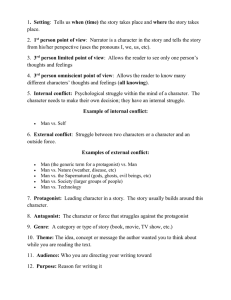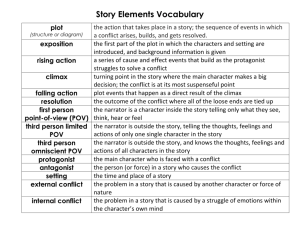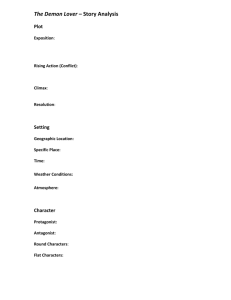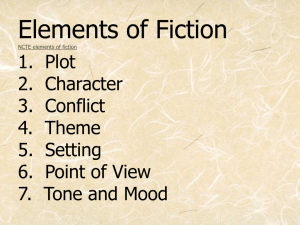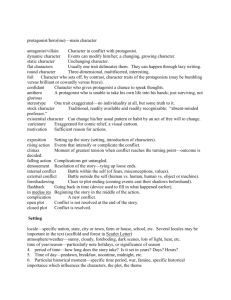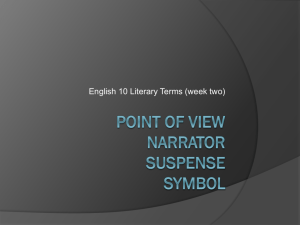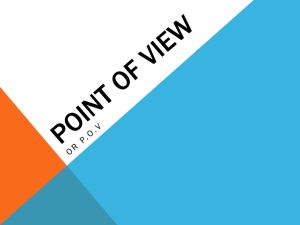File
advertisement
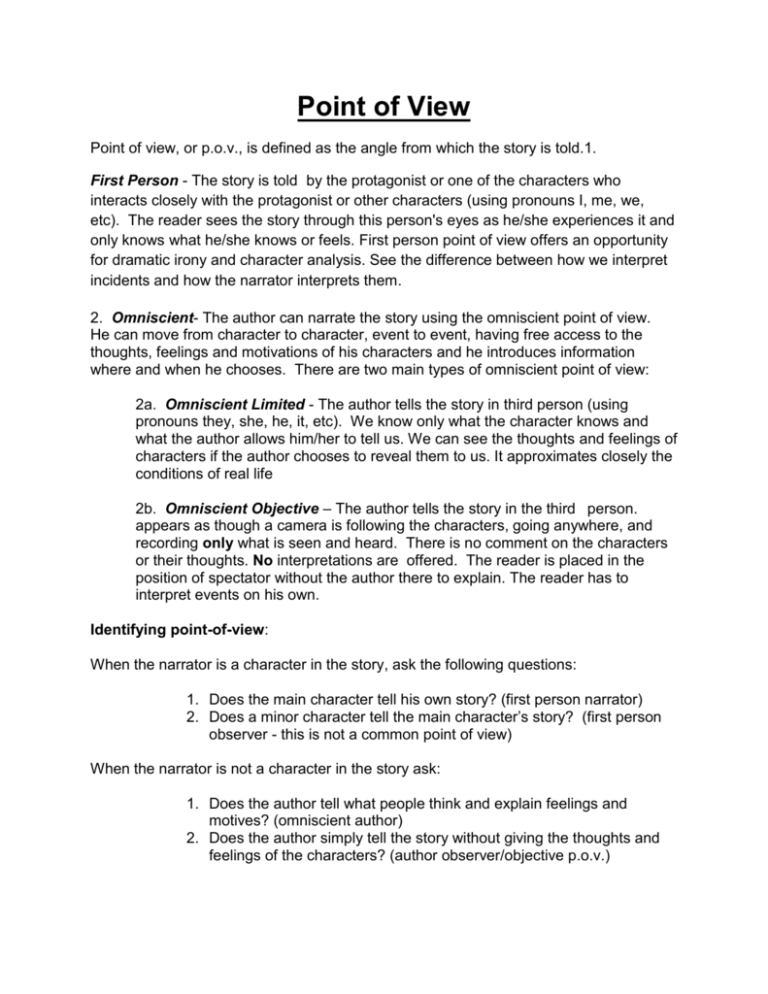
Point of View Point of view, or p.o.v., is defined as the angle from which the story is told.1. First Person - The story is told by the protagonist or one of the characters who interacts closely with the protagonist or other characters (using pronouns I, me, we, etc). The reader sees the story through this person's eyes as he/she experiences it and only knows what he/she knows or feels. First person point of view offers an opportunity for dramatic irony and character analysis. See the difference between how we interpret incidents and how the narrator interprets them. 2. Omniscient- The author can narrate the story using the omniscient point of view. He can move from character to character, event to event, having free access to the thoughts, feelings and motivations of his characters and he introduces information where and when he chooses. There are two main types of omniscient point of view: 2a. Omniscient Limited - The author tells the story in third person (using pronouns they, she, he, it, etc). We know only what the character knows and what the author allows him/her to tell us. We can see the thoughts and feelings of characters if the author chooses to reveal them to us. It approximates closely the conditions of real life 2b. Omniscient Objective – The author tells the story in the third person. appears as though a camera is following the characters, going anywhere, and recording only what is seen and heard. There is no comment on the characters or their thoughts. No interpretations are offered. The reader is placed in the position of spectator without the author there to explain. The reader has to interpret events on his own. Identifying point-of-view: When the narrator is a character in the story, ask the following questions: 1. Does the main character tell his own story? (first person narrator) 2. Does a minor character tell the main character’s story? (first person observer - this is not a common point of view) When the narrator is not a character in the story ask: 1. Does the author tell what people think and explain feelings and motives? (omniscient author) 2. Does the author simply tell the story without giving the thoughts and feelings of the characters? (author observer/objective p.o.v.) Characters One way to distinguish between characters is saying how much we know about them: 1. Dynamic Character: An important character whose actions drive the plot and who changes with the events of the story. 2. Static Character: A character who does NOT change during the course of the story. 3. Round Character: A character that is seen from a number of viewpoints or in different situations during the story. Round characters are well developed by the writer. We get a clear idea of what he or she looks and acts and is like. 4. Flat Character: A background character whose personality traits are not developed or explored in the story. a flat character is someone we are not told much about, but he or she serves a purpose in the story. 5. Protagonist: The main character in fiction or drama who sets the plot in motion and on whom we focus our attention. Most protagonists are rounded, dynamic characters who change in important ways during the course of the plot. 6. Antagonist: The character or force that blocks the protagonist. Often, but not always, antagonists are villains while protagonists are heroes. Based on these classifications, you could have various combinations of characters, but some are more likely than others. Most often a protagonist will be round and dynamic, but antagonists can be flat or round and dynamic or static.
